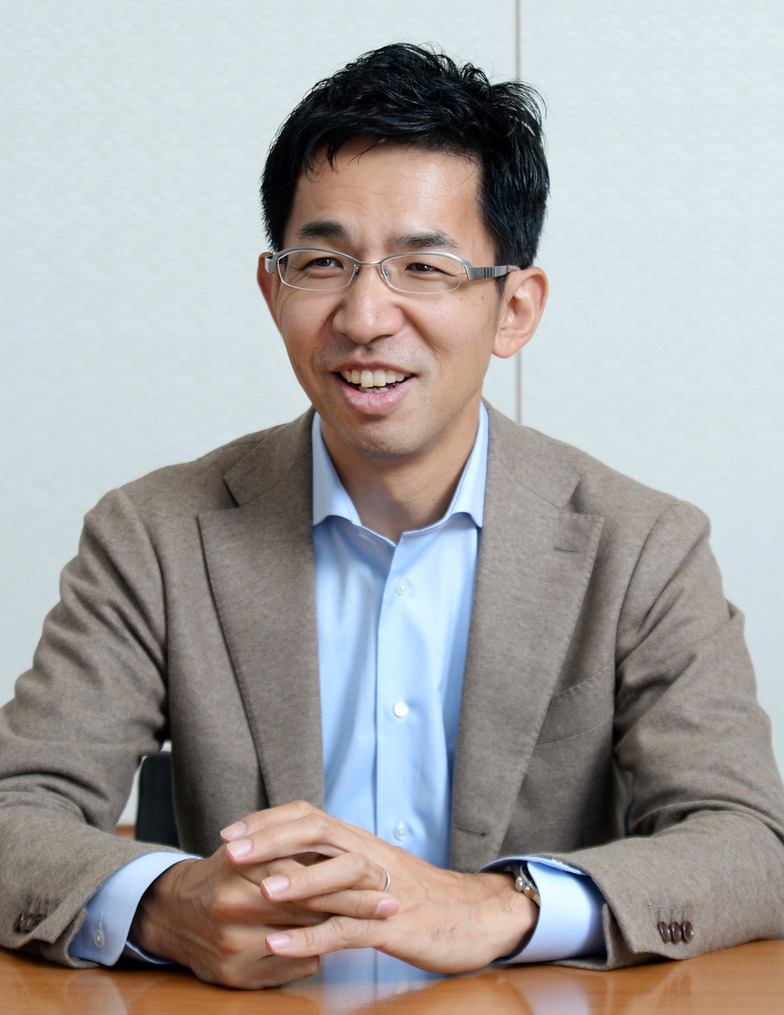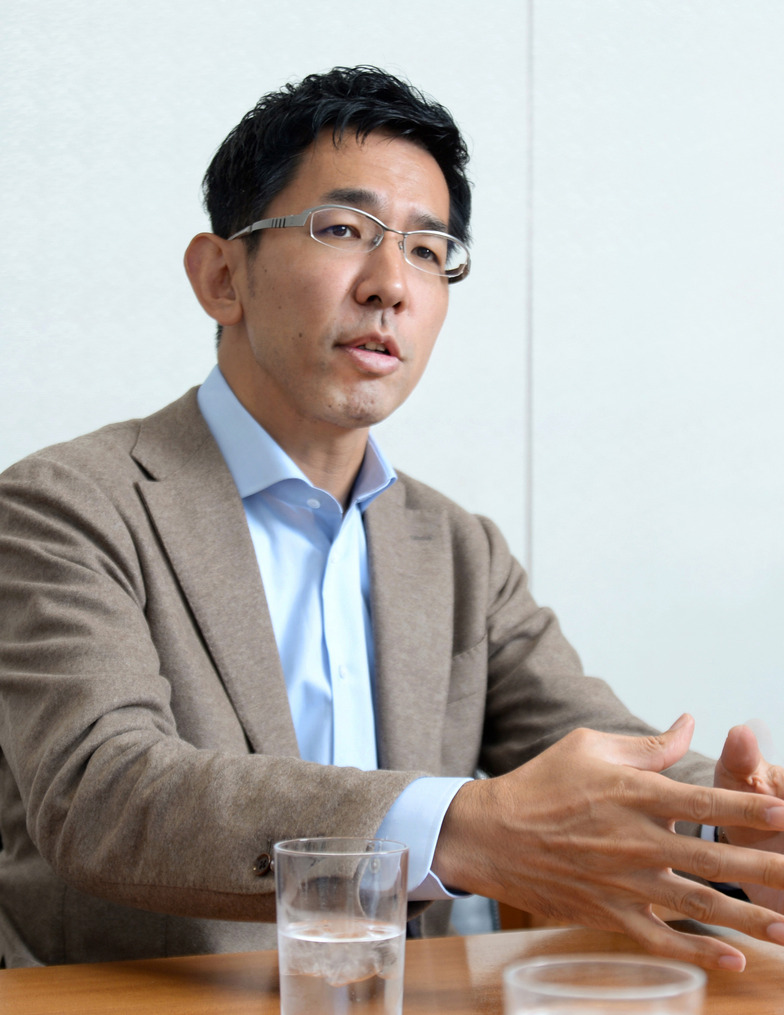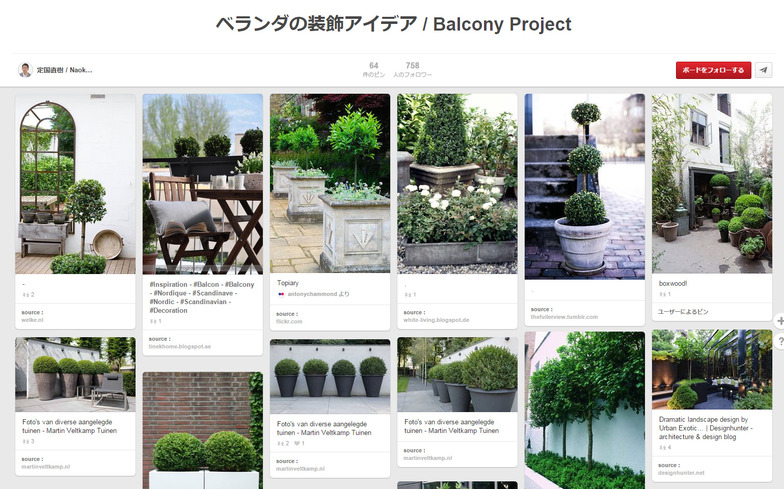2015 Digital Industry Outlook Part 2 From the perspective of design and visuals, The Internet is undergoing significant change ~ Naoki Sadakuni, President, Pinterest Japan

Naoki Sadakuni
Pinterest Japan

The digital industry continues its dizzying transformation. Yet some point out that now is a major turning point within this evolution. As we enter 2015, we asked key industry figures to share their outlook for the sector's future.
(Interviewer: Yuzo Ono, Planning Promotion Department Manager, Dentsu Digital Inc. Business Bureau)
The Power of UI, Design, and Visuals in the Digital World Grows Stronger
──Looking back on the recent state of the internet, what are your thoughts?
Sadanori: I believe there are changes occurring over the medium to long term and others happening in the short term. In the medium to long term, it's about all kinds of devices—not just existing ones like smartphones and PCs, but also wearables and home appliances—connecting to the internet. Concepts like "ubiquitous computing" have been proposed for quite some time, but the so-called IoT is finally becoming a reality. What becomes crucial here is how to integrate a product's functionality and design. This is a challenging endeavor, but concrete steps are already being taken in academic circles. For example, Tama Art University has established a new "Integrated Design Department." I've heard Professor Naoto Fukasawa from the Integrated Design Department explain that the department educates from the perspective that design should be approached holistically across various platforms, devices, and the living spaces where people reside. Personally, I also anticipate the development of this academic approach into real business applications in the near future. Since the very nature of products is changing, companies as creators will need to adapt. I expect discussions are already underway about how organizations should be structured to respond to this.
For example, Pinterest has designers firmly embedded within its organization. One of the founders, Evan Sharp, who serves as CCO (Chief Creative Officer), was originally an architectural designer. Photos from the startup days show just two people—an engineer and a designer—discussing and developing while looking at a single computer monitor. This is a symbolic image of the fusion of making and design, and Pinterest was developed with a high-level balance between UI (user interface) design and product functionality.
──Does this mean that in the world of ubiquitous computing and IoT (Internet of Things), the role of UI and design becomes more significant?
Sada: Yes. And it profoundly impacts work styles, decision-making, organizational structure, and strategy. Design should be more deeply integrated into the organization itself. I've exchanged views with Atsushi Hasegawa, CEO of Concent and an active information architect. Even from his perspective as a service design advocate, his comment that "Globally, Japan is a country with its own unique design philosophy, and while we take pride in that, we lack the framework to translate that philosophy into products and services" was particularly memorable. Considering that cross-functional collaboration will become essential going forward, we agreed that designers should be key participants in these efforts. This will accelerate the development of frameworks for embedding design into products. While a product-centric approach focused on making products better has been sufficient until now, I believe integrating design elements that encompass how products are perceived, interacted with, and used will become increasingly important in the IT industry.
On the other hand, from a short-term perspective, smartphones are having a major impact, and screens are getting larger, leading to the rise of "phablets." This makes visual impact increasingly important. Simultaneously, the volume of information people must process is growing exponentially. While people need to filter and select information, visuals remain crucial in helping them process it efficiently.
──Do you also feel the growing importance of visuals through your actual experience operating Pinterest?
Sadanori: I believe Pinterest's own growth is proof of the importance of visuals. According to external data from comScore, we have over 70 million users worldwide. Instagram and other visual-centric curation services are also expanding. Another example is curated news apps, which effectively use thumbnail photos. They're designed so you can quickly scroll through article lists and easily pick out articles that catch your interest.
As devices evolve and diversify, "browsing" becomes the keyword
──Precisely because content is increasingly skimmed, visual elements become crucial.
Sadanori: Exactly. I believe "browsing" will be the key concept in the smartphone space going forward. Users scroll through content at incredible speeds, so each service must consider how to provide the best browsing experience. Pinterest spent four years experimenting with various UIs to find the optimal solution, ultimately inventing its unique "Grid UI." The current design standardizes the width of image thumbnails. This allows the eye to keep up even when swiping down from top to bottom, specifically optimizing the browsing experience on smartphones. While the grid UI looks simple, it was technically quite challenging. That's precisely why engineers and designers collaborated on its development. Recently, we see many examples of this grid UI concept being adopted by other services.
──As interfaces designed for smartphones become central, what direction do you think PCs will take in the future?
Sadakuni: Considering ease of work, PCs remain superior, so I believe a certain volume will persist. However, I think the era where everything absolutely required a PC is over. Personally, I've stopped consciously thinking about the device. I no longer work with locally stored files; most tasks now go through the cloud. I simply use the device that best fits the situation and constraints at any given moment.

──Various wearable devices are being announced. Are there any you're particularly interested in?
Sadanori: As a gadget enthusiast, I find them all intriguing. Fundamentally, wearables will likely expand from items already integrated into daily life—watches, glasses, rings, necklaces. It won't be immediate adoption; there will be a process where they become commonplace, and the best ones survive. As wearable devices diversify, linked services will emerge in the medium to long term. Pinterest has a feature called Place Pins tied to maps. We're also developing a service where, if you have Pinterest on your wearable device, it will notify you when you approach a location you've pinned.
──Robots are also gaining attention recently. What are your thoughts?
Sadakuni: Fifteen years ago, I worked as a visiting researcher at MIT's Artificial Intelligence Laboratory, which studies robotics. Back then, robotics was developed within a closed academic sphere, and practical application in the B2C domain seemed a distant prospect. However, as seen in moves like Google acquiring robotics companies, I sense we've entered a new phase where robots are moving beyond the academic world to become applications in everyday life. Of course, the more physical the product, the higher the demands for safety and reliability, so it won't spread as rapidly as online products. Even so, I feel things have changed dramatically in just the last few years.
Pinterest is a platform that inspires and unleashes human creativity
──From a content perspective, how do you view the trends in the internet industry?
Sadakuni: Pinterest's fundamental philosophy is contributing to content holders and creators. It began with the pure belief that "the world could be more creative." There's also a desire for people to get their work known more widely and inspire others to take action. That's why Pinterest pins always link back to the original site when clicked.
──So Pinterest is a platform designed to make people more creative?
Sadanori: Exactly. As children, we're all creative—drawing pictures and such—but as we grow, we get boxed into certain frameworks. That's such a waste. Ordinary people should be able to be more creative too, and Pinterest can be a platform that stimulates and unleashes that creativity. Online, individuals can now act as media outlets, sharing their own work, curations, and various other content. The groundwork for this is already in place. The way information is shared is changing, including music and books, so I think we need to build businesses based on that premise.
──The idea that organizing information, like curation, is itself a form of creation is emerging, broadening the concept of what constitutes creation.
Sadakuni: With the sheer volume of information exploding, the act of curation—organizing and tidying it—is gaining value. Pinterest also has this aspect, as it organizes various visuals from the world. This is a creative activity within daily life. For example, thinking about how to design the space of a room in your own home is precisely a creativity-filled activity. Pinterest supports this creative activity by curating diverse visual information to stimulate it, allowing users to gain inspiration and extract meaning that resonates with them. Personally, I was interested in balcony gardening but lacked a concrete vision. While collecting photos that caught my eye on Pinterest, I realized, "Ah, I wanted a simple modern style of gardening, like this interior design." Back in the day, I'd pore over magazines to figure things out, which was tough. Now it's overwhelmingly easier.
──So platforms like Pinterest can facilitate the creativity of many people, right?
Sadakuni: I agree. There's a common misunderstanding that Pinterest is a social networking service. We see it more as a platform that supports people's creativity.
Do traditional advertising concepts no longer apply to native advertising?
── As the base of content created by ordinary people expands, monetization remains a constant topic of discussion. What are your thoughts?
Sadanori: From the user's perspective, we need to fundamentally consider how monetization should work. Pinterest in the US has started monetization through ads, but rather than rolling it out all at once, they're conducting tests limited to corporate advertisers who have Pinterest business accounts and deeply understand the platform's characteristics. We're working with about 15 major companies. This is a trial aimed at building a "win-win-win" model that benefits both businesses and users. For example, on Pinterest's search results pages, we display highly relevant ads linked to the search keywords. We carefully consider the ad visuals to ensure they don't hinder user inspiration—they actually enhance it. Traditional advertising often focused on grabbing attention by being conspicuous. We are now exploring a different perspective on what advertising should be. For instance, simply placing magazine ad visuals directly on Pinterest might feel jarring to users. We believe a fundamentally different approach to advertising expression is necessary.
──That's exactly what we're talking about, like the native ads that blend into the content and are gaining attention lately.
Sadanori: Exactly. News curation services are also tackling this. Blending in is crucial, but it must never deceive users. We must be utterly sincere about this. We aim for ads that are clearly identified as such, yet provide a positive viewing experience for users. It's not just about diversifying exposure channels; the very nature of advertising is diversifying and becoming more complex.
Social media roles are becoming more specialized, and users' literacy is improving
──Are you paying attention to the expansion of C2C initiatives like Etsy, an e-commerce site for user-level crafting?
Sada: In the US, Etsy is the most popular platform in the handmade/DIY space and has built a strong relationship with Pinterest. Many creators on Etsy showcase their handmade work, and Pinterest is used to reach a wider audience—they complement each other very well. Specifically, Pinterest pins are embedded within Etsy listings, allowing interested users to pin and save items. Additionally, Etsy has created a business account on Pinterest where they curate content around various themes, attracting users to visit these boards. In Japan too, handmade craft fairs are held annually, drawing large crowds, and e-commerce sites are rapidly increasing. Therefore, this field will undoubtedly gain momentum in Japan as well. Pinterest is a platform that can strongly support C2C initiatives.
──You mentioned that "Pinterest is not an SNS." What are your thoughts on social media in general?
Sadanori: Social media platforms are becoming more specialized, so users increasingly choose the right one for each situation, and overall literacy is rising. Personally, even just among SNS, I use Facebook, Twitter, Instagram, Path, LinkedIn, and Google+. I use Instagram for visual content, Twitter to publicly vent my current thoughts, Facebook for relatively closed communication, Google+ for business topics, and Pinterest to share what I'm currently working on. Social media operators are also considering where to focus their strengths, and there's a tendency to acquire other companies to fill gaps.
──Big data has been getting a lot of attention lately. What are your thoughts?
Sadanori: Generally speaking, big data for determining corporate strategy is being utilized effectively. However, big data that comprehensively captures overall consumer behavior hasn't been achieved yet, so competition will likely focus on that area. As individual business units, we have data on how users purchase specific products, but that's only from the company's perspective. There's nothing connecting the actions of an individual person from the moment they wake up in the morning until they go to sleep at night. While having such data would undoubtedly be useful in certain areas, it also means privacy is completely stripped away. Personally, I'm very interested in how this will play out going forward.
──While the internet advances, it also creates social issues like privacy concerns, account takeovers, and the right to be forgotten.

Sadamitsu: These are serious problems, and Pinterest must address them. For instance, requiring all users to manage their accounts with one-time passwords isn't realistic. Enhancing security often reduces convenience, so it's about determining acceptable trade-offs. We need to advance technologies that reliably notify users when account takeovers are detected. Additionally, educational campaigns to improve user literacy are essential.
The ability to identify 80% of the direction from 20% of factual data and act on it is essential.
──What possibilities and challenges lie ahead in the online world?
Sadakuni: The overall direction is that users will be able to access the cloud from anywhere, using the device best suited to that location, regardless of where or what device is being used. The challenge going forward is determining what constitutes the right product for each location and how it should be designed to further improve people's lives.
──What kind of talent will the internet industry need going forward?
Sadanori: People who can see things holistically will become crucial. We need talent that can identify a positive direction and move forward even when the path ahead is unclear. If we wait until we find the 100% correct answer before proceeding, we won't keep pace with the speed of the times. It's necessary to identify the general direction based on 20% of the data, keep moving toward the correct answer while making adjustments when encountering obstacles. We need people who have the mental fortitude to push forward even in the face of uncertainty and who can think across disciplines. However, intuition alone is not enough; decisions should be based on data as much as possible. Even if 100% of the data is not available, we can use our analytical skills and insight to infer 80% of the information from 20% of the data. There are two ways of thinking about things: the waterfall model and the agile model. The waterfall model involves first solidifying the specifications and reaching complete agreement with all relevant parties, then creating a prototype, testing it, and only proceeding to the next step once all checkpoints have been satisfied. On the other hand, the agile model involves creating something that seems about 80% correct even with only 20% of the factual data, releasing it to the world for testing even if it is only 40-50% complete, and finding the right direction without hesitation, even if it means stopping if it is wrong. I believe that the industry clearly needs to be agile. We cannot keep up with user needs, and technological innovations are happening one after another, causing existing technologies to become obsolete. We need to quickly test what can be done with the latest technology. However, as a company, we need to try new things while firmly adhering to our mission, which is the one thing we cannot compromise on.
──What are your expectations for the advertising industry moving forward in 2015?
Sadakuni: We'll see continued trial and error with native advertising. As the range of media suitable for various advertising formats expands, new cross-media approaches will be needed. Advertising itself will diversify beyond merely capturing attention. Additionally, companies must rethink what advertising should be, increasing complexity. This represents a change on a different level from before. While tracking click-through rates and conversions remains necessary for evaluating cost-effectiveness, such simple metrics alone will no longer suffice for assessment. We should keep a close eye on the emergence of various new advertising approaches.
Was this article helpful?
Newsletter registration is here
We select and publish important news every day
For inquiries about this article
Back Numbers
2015/01/26
2015 Digital Industry Outlook ① The "individual" in the online world has finally begun to drive the real economy ~ Takashi Honma, Executive Officer, Rakuten
2014/12/14
Rethinking the Internet from a Human Sensibility —A Cutting-Edge Critic Discusses the Present State of the Net and Creativity ~Entrepreneur and Researcher Dominic Chen
Author

Naoki Sadakuni
Pinterest Japan
Graduated from the Graduate School of Engineering at Kyoto University and earned an MBA from the University of Southern California. Held positions including at McKinsey & Company and as Director of Product Marketing at Google before assuming his current role in October 2013.
